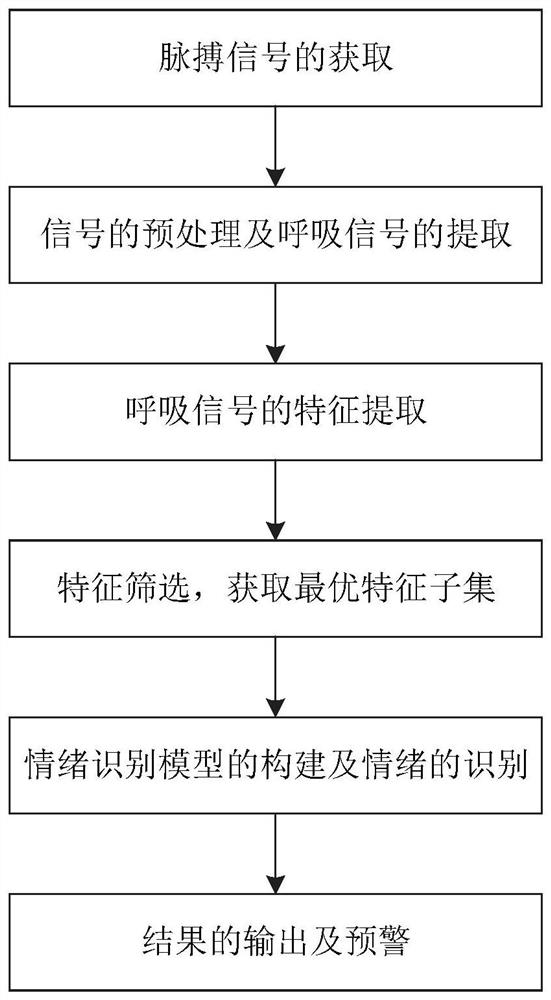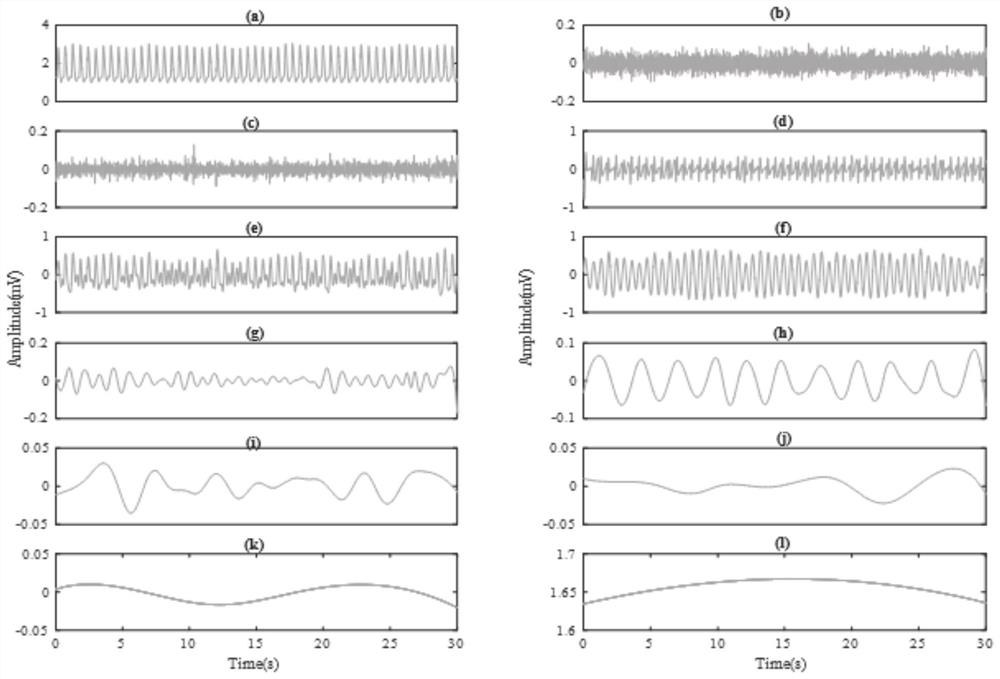Emotion recognition system and method based on breathing components in pulse signals
A pulse signal and emotion recognition technology, applied in the field of signal recognition, can solve the problems of cumbersome breathing signals, complicated breathing detection devices, and difficulty in real-time emotional monitoring, and achieve accurate real-time recognition and early warning, and improve classification accuracy and accuracy.
- Summary
- Abstract
- Description
- Claims
- Application Information
AI Technical Summary
Problems solved by technology
Method used
Image
Examples
Embodiment 1
[0038] This embodiment provides an emotion recognition system based on the breathing component in the pulse signal. The emotion recognition process implemented by the system is as follows: figure 1 shown, including:
[0039] The signal extraction module is used to reconstruct the obtained intrinsic mode function (Intrinsic Mode Function, IMF) to extract the respiratory signal after performing ensemble empirical mode decomposition on the pulse signal;
[0040] The feature extraction module is used to perform preliminary feature screening on the time-domain features, frequency-domain features and entropy features extracted from the respiratory signal, and to construct a feature subset after the features after screening are assigned weights using the random forest Gini index;
[0041] The recognition module is used to input the feature subset into the pre-trained random forest classifier, and output the emotion recognition classification result.
[0042] Preferably, the system in ...
Embodiment 2
[0139] This embodiment provides an emotion recognition method based on the respiratory component in the pulse signal, including:
[0140] S1: Perform ensemble empirical mode decomposition on the acquired pulse signal, and then reconstruct the obtained eigenmode function to extract the respiratory signal;
[0141] S2: The time-domain features, frequency-domain features and entropy features extracted from the respiratory signal are screened by significant difference, and the selected features are weighted by random forest Gini index to construct a feature subset;
[0142] S3: Input the feature subset into the pre-trained random forest classifier, and output the emotion recognition classification result.
[0143] It should be noted here that the above steps S1 to S3 correspond to the modules in Embodiment 1, and the modules in Embodiment 1 and the steps corresponding to Embodiment 2 have the same examples and application scenarios, but are not limited to those in Embodiment 1 abo...
PUM
 Login to View More
Login to View More Abstract
Description
Claims
Application Information
 Login to View More
Login to View More - R&D
- Intellectual Property
- Life Sciences
- Materials
- Tech Scout
- Unparalleled Data Quality
- Higher Quality Content
- 60% Fewer Hallucinations
Browse by: Latest US Patents, China's latest patents, Technical Efficacy Thesaurus, Application Domain, Technology Topic, Popular Technical Reports.
© 2025 PatSnap. All rights reserved.Legal|Privacy policy|Modern Slavery Act Transparency Statement|Sitemap|About US| Contact US: help@patsnap.com



